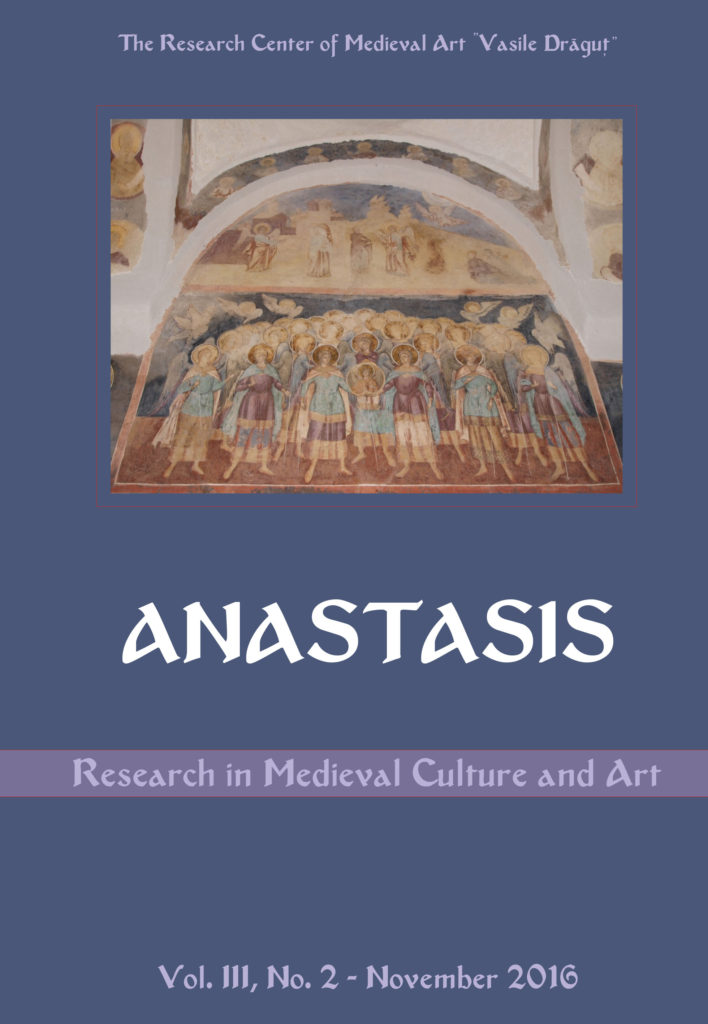Sucevița Monastery – The overpainting from narthex and exonarthex. Technique of execution and the methodology of removal
Sucevița Monastery – The overpainting from narthex and exonarthex. Technique of execution and the methodology of removal
Author(s): Georgiana Cristina ZaharieaSubject(s): Fine Arts / Performing Arts, Visual Arts, Middle Ages, Eastern Orthodoxy
Published by: Editura ARTES
Keywords: Mural painting; Middle Ages; Sucevița Monastery; a fresco; oil painting; iconography; Descent from the Cross; Anastasis / Resurrection; the Trinity; the Last Judgement
Summary/Abstract: The overpaintings found on the frescoes from SucevițaMonastery, date from periods that remain uncertain due to the rarity ofwritten documents. Probably they were made because of the degradationsthat occurred in time or because of tastes. These interventions are made inoil technique or tempera, for that reason we can date them around the 19thcentury when there was this tendency of painting Orthodox churches in oil.The overpaintings are placed in key position, on the lunette, facilitatingaccess from exonarthex to the narthex or from narthex to the tomb room.In terms of iconography, the overpaintings covered representations like:Anastasis / the Ressurection; The Holy Trinity of the New Testament andVirgin Mary with the thief represented in heaven (detail from the LastJudgement). The present paper tries to make a comparison among the threesurfaces with overpainting, bringing technical arguments regarding thedifferences between them. At the same time, the paper presents detailsabout the methodology applied to cleanning the overpaintings and ithighlights the original image that can bring nuances in the iconographicinterpretation
Journal: Anastasis Research in Medieval Culture and Art
- Issue Year: III/2016
- Issue No: 2
- Page Range: 53-74
- Page Count: 22
- Language: English

